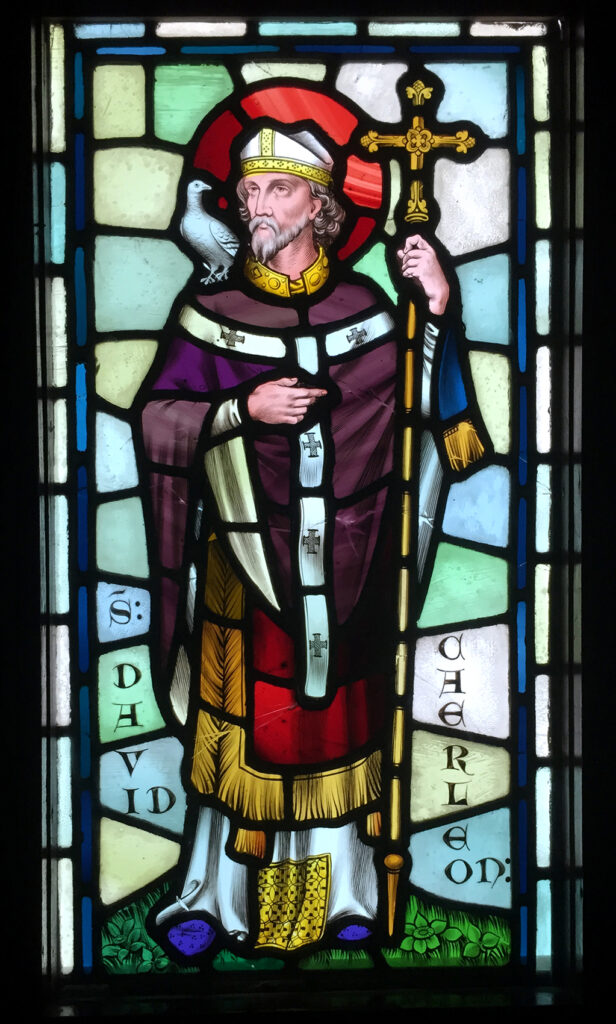
Image Source: The Catholic Sun
Material distilled from Omnium Sanctorum Hiberniae \ Catholicireland.net \ Sky History Channel
St. David is the national saint of Wales. He lived in the 6th century and his mother was called ”Non”. David’s Irish mother was a devout Catholic and she had David baptised by the Irish St. Ailbhe of Emily. She also had her son educated by a monk called St. Paulinus. Her son grew up to found the monastery at Meniva in Pembrokeshire, in south Wales.
How this monastery came about is fascinating. David lit a fire on the grounds of Meniva where he was directed to, by an angel. At that time, a pagan druid named Baya, ruled those lands and beyond with an iron fist. Upon seeing the fire lit, Baya was filled with dread, for he knew it was a Christian fire that would take possession of the land. Baya reluctantly granted the land of Meniva to St. David after Baya’s troops failed to expel him.
The Irish connection with Meniva is quite strong. The monastery was built on the promenade and was frequented by Irish pilgrims. For example, there is St. Senan who spent some time there after his trip to Rome. We also have St. Brendan, who took a retreat there, after his long sea voyage to the Promised land. St. Modomnoch brought back from Meniva the culture of honey bees to the Irish monasteries. St. Aidan of Ferns was a close and early disciple of St. David when founding the monastery at Meniva and even became an abbot at Meniva for a spell.
We have biographical accounts in ‘’The life of St. David’’ written by Rhygy-Farch. This author wrote on the half Irish / half Welsh saint depicting David’s mother Non as a type of Mary of Wales. David, is depicted as a Christ-like figure, whose birth was prophesised to St. Patrick by an angel. This prophecy was announced along the coast of Wales near Meniva on St. Patrick’s return trip to Ireland where he was to begin his mission.
David was a thaumaturge, a mathematician, a musician and theologian, as well as curing the blindness of a teacher with a simple touch. St. David was known for drinking only water, refraining from beer. His monks were called the water drinkers, and were known for austere living. St. David encouraged all his monks to be their own ox when ploughing the land. He lived on vegetables and herbs.
David advised Welsh soldiers battling against the Saxon to wear leeks in their hats so that they knew who to strike and who not to. This advice gave rise to the depiction of the saint with the leek, which is the national emblem of Wales.
A great miracle attributed to St. David was that while preaching to a large and gathering crowd, many of those who came, could not hear or see David very well. Suddenly, a white dove landed on his shoulders, and the earth beneath him began to rise upwards forming a hill which enabled his voice to travel further, and the crowds at the back rows could now see him as well.
He is believed to have died in old age around the year 589 A.D.
St. David’s feast day was recorded in the Latin Martyrology of Tallaght and the Irish Martyrology Félire Óengusso in the early ninth century. He was canonised a saint in 1120 by Pope Callistus II, who declared that two pilgrimages to the national holy shrine of Wales at Meniva is equal to one to Rome.
We celebrated St. David feast day in Ireland on 1st March in appreciation to his special Irish mother Non, and the Irish saints who spent time in Meniva as well as St. Patrick’s prophecy on the birth of St. David.